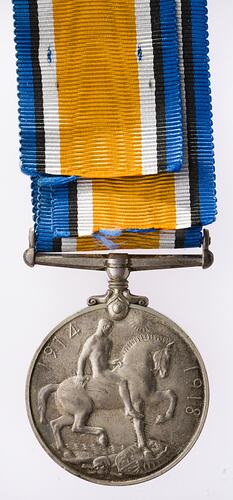Richard Herbert Joseph ('Bertie') Fetherston was born in 1864, son of Gerald Henry Fetherston and his first wife Sarah Ellen Harvey. He was born at the Melbourne Lying-in Hospital where his father was the resident surgeon and his mother had been matron.
In 1881 Richard travelled to Dublin where he became a licentiate of the Royal College of Surgeons in Ireland (1884) and the King and Queen's College of Physicians in Ireland (1885). He then studied at the University of Edinburgh and graduated in 1886 (M.B., Ch. M.), Richard received his M.D. from the University of Edinburgh in 1888 (ad eund as he had returned to Melbourne in 1887).
Upon his return to Melbourne, Richard became the resident medical officer at the Women's Hospital (previously the Melbourne Lying-in Hospital) until 1914 when he became the first gynaecologist at the (Royal) Melbourne Hospital, a position he held until 1924. Although he was associated with these hospitals, Richard had also opened a private practice in 1891 specialising in obstetrics and gynaecology.
Richard also held numerous public positions including: a Volunteer of the Officers Decoration; President of the Victorian Branch British Medical Association in 1911; a founding member of the Federal Committee in 1912; Trustee of the Medical Society of Victoria; a founder and director of Australasian Medical Publishing Company Ltd; a fellow of the Royal Australasian College of Surgeons in 1927; an examiner for Melbourne University; a JP; a medical officer at the Prahran, Deaf and Dumb Hospital; and a Prahran city councillor from 1893-1899.
Richard also served on the Legislative Assembly for Prahran in 1921, but retired from politics in 1924 as he did not enjoy it.
Richard's career in the military was almost as long-standing as his medical career. Gazetted as a captain in the Victorian Militia in 1887, Richard later volunteered for service in World War I on 5 August 1914 and was 'taken up' on 15 August 1914On the latter date that he was made the Director-General of Medical Services (DGMS) on a part-time, temporary basis due to the illness of Colonel Williams, the previous DGMS. He was gazetted as a Colonel in 1915 and as a Surgeon-General in 1916.
Although he had enlisted for active service, Richard was based in Melbourne for most of the war, having been deemed 'indispensable' to Australia. Despite this, he was sent on two inspection tours of the Australian Army Medical Corps in Egypt, Gallipoli and England, and was responsible for the reorganisation of the corps. He was mentioned in dispatches twice and was awarded several Medals and Decorations as a result of his service, including a 1914/15 Star, a British War Medal, a Victory Medal (with oak leaf in bronze on ribbon for MID) and a Volunteer Decoration.
Richard is also mentioned in A.G. Butler's history of the war, where he is commended for his abilities and devotion to duty. He retired from military service in 1919.
In 1894 Richard had married Victoria Amelia Gourlay (b. 1863), a 'special nurse' at the Women's Hospital (where they met) who had been awarded the Maltese Cross by the City of Hobart for her services during the typhoid epidemic. The couple had three children - Ellen (b. 1899), Gerald (b. 1901) and Herbert (b. 1904) - before she died in August 1915 of muscular atrophy.
Richard remained a widower until his death in St. Kilda on 3 June 1943.
---
Sources:
Ancestry.com
Australian Dictionary of Biography
Butler, A.G., Official History of the Australian Army Medical Services, 1914-1918
Fetherston Family Papers held at the State Library of Victoria (MS 9865)
National Archives of Australia
More Information
-
Keywords
-
Localities
-
Authors
-
Article types
